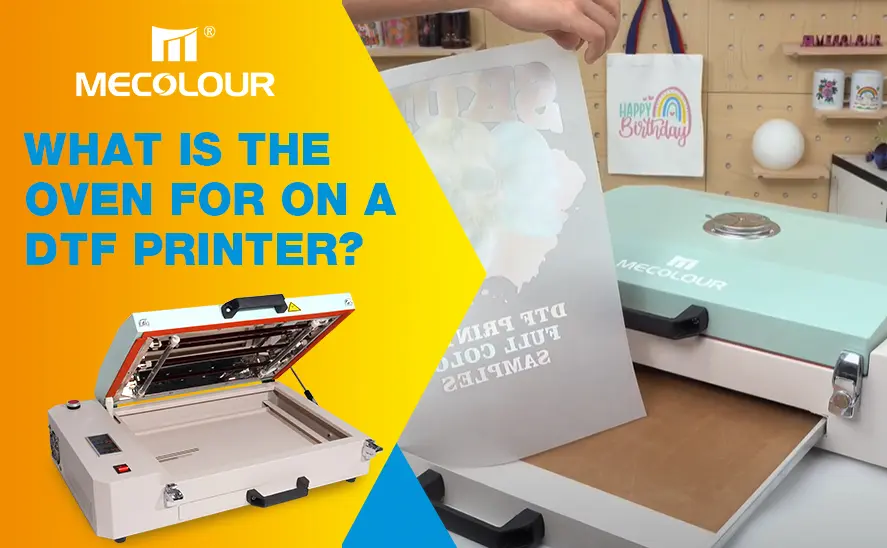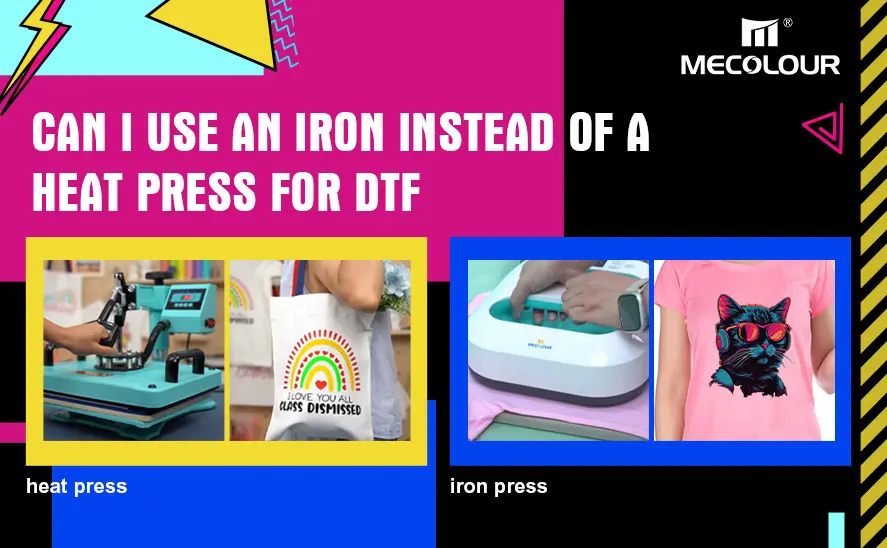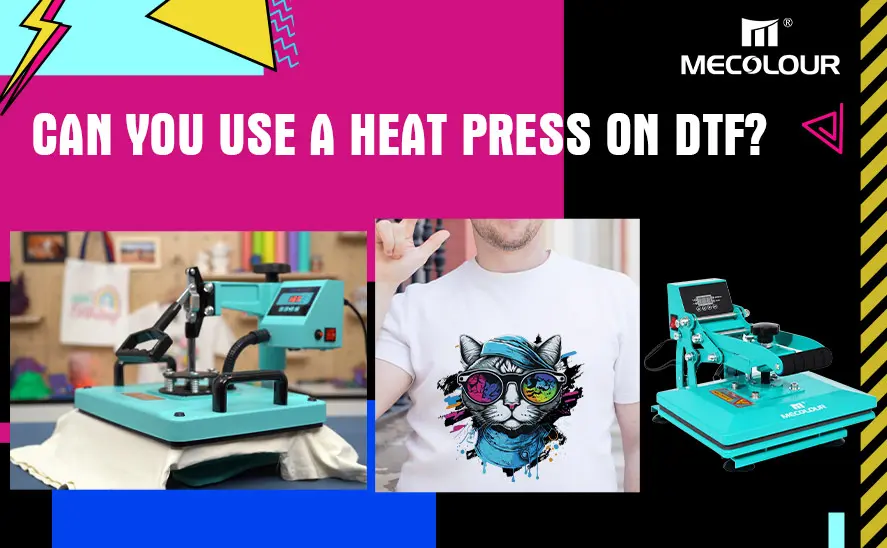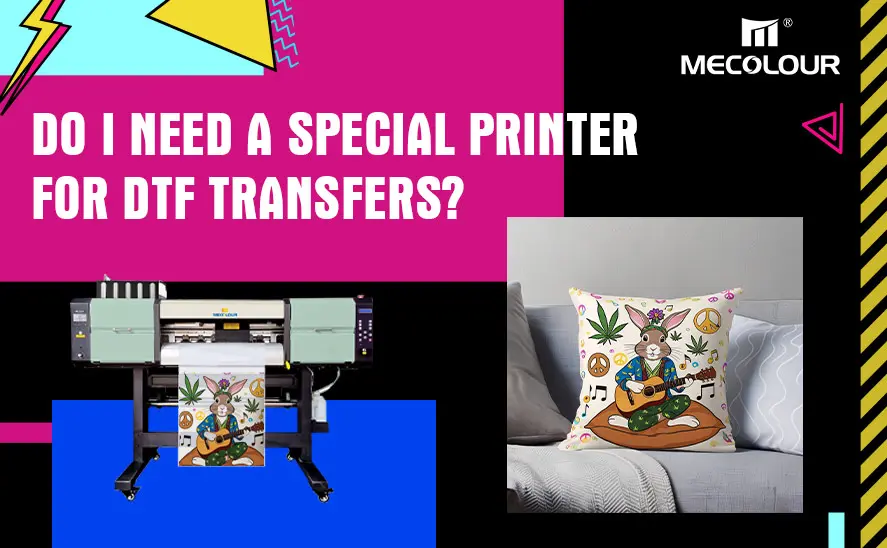
Blog
How to Cure DTF Powder with an Oven: A Complete Guide
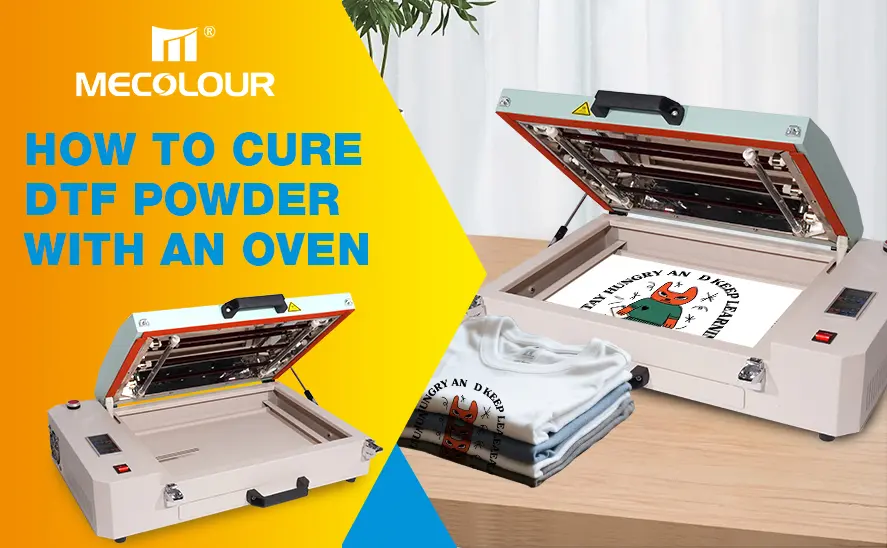
Direct-to-Film (DTF) printing has revolutionized the garment decoration industry, offering a flexible and vibrant alternative to traditional printing methods. One of the critical steps in the DTF process is curing the hot melt adhesive powder properly. Using an oven like the MECOLOUR A3 DTF Oven ensures consistent and high-quality results. Below, we walk you through the entire curing process, machine settings, best practices, and troubleshooting tips to help you master cure DTF powder.
What Is DTF Powder Curing and Why It Matters
DTF powder curing refers to the process of melting the hot melt adhesive powder applied to the printed film before heat pressing it onto a fabric. Curing the powder correctly ensures:
- Strong adhesion to the garment
- Long-lasting durability after multiple washes
- A smooth and even transfer without peeling or cracking
Improper curing may result in poor bonding, affecting the print quality and product longevity.
Essential Tools for Curing DTF Powder
To cure DTF powder effectively, you need a controlled heat source. The most recommended equipment includes:
- DTF Oven (like MECOLOUR A3 DTF Oven)
- Infrared thermometer for temperature accuracy
- Timer or preset curing mode for precision
- Heat-resistant gloves or tongs for safety
The MECOLOUR A3 DTF Oven is designed specifically for uniform powder melting, providing adjustable temperature and timer controls that are ideal for DTF applications.
Step-by-Step: How to Cure DTF Powder with an Oven
Step 1: Print and Powder
Start by printing your design onto the PET film using a DTF printer. While the ink is still wet:
- Sprinkle DTF powder evenly across the printed area
- Shake off the excess powder to ensure only the inked area retains adhesive
A uniform powder layer is essential to achieve consistent curing.
Step 2: Preheat the Oven
Before placing the film inside, preheat your DTF oven to the ideal curing temperature. For most DTF powders, the optimal temperature range is:
- 120°C to 160°C (248°F to 320°F)
- Recommended: 150°C (302°F) for standard hot melt powder
Always verify the internal oven temperature with an infrared thermometer to avoid over- or under-curing.
Step 3: Cure the Film
Place the powdered PET film face up on the oven tray. Ensure it lies flat without curling. Insert it into the oven and:
- Cure for 2 to 3 minutes at 150°C
- Monitor closely to check when the powder turns from white to glossy transparent
This visual change indicates that the powder has fully melted and bonded with the ink.
Step 4: Cooling Down
After curing, remove the film using heat-resistant tools and place it on a cool, flat surface. Let it cool completely to room temperature.
- Do not touch the adhesive side
- Avoid stacking or bending the film while it’s hot
Proper cooling stabilizes the adhesive layer and prepares it for transfer.
Common Mistakes to Avoid During Curing
Overheating the Powder
Excess heat can scorch the film or cause the powder to bubble or yellow. Always stick to the temperature range and time guidelines.
Under-curing
If the powder remains powdery or chalky after curing, it means insufficient heat or time was used. This will lead to poor transfer adhesion.
Uneven Powder Application
Blotchy or inconsistent powder coverage creates patchy transfers. Ensure even powder distribution and full removal of excess powder.
Testing for Proper Cure
Before mass production, always test a sample by transferring it to a fabric and checking:
- Adhesion strength
- Edge clarity
- Color vibrancy
- Wash durability (after 24 hours)
If the design peels off or cracks easily, revisit your curing settings.
Benefits of Using a DTF Oven over Heat Guns or Heat Presses
While heat guns or heat presses can be used, they lack the uniformity and control offered by DTF ovens. Benefits of an oven include:
- Even temperature distribution
- No need to hover over the film
- Faster curing of multiple sheets
- Safer and hands-free operation
The MECOLOUR A3 DTF Oven stands out with its compact design, accurate controls, and easy-to-clean tray, making it ideal for small to medium production runs.
DTF Oven Settings Guide for Popular Powders
| Powder Type | Temp (°C) | Time (min) | Film Type |
| Standard TPU Powder | 150°C | 2-3 mins | Cold Peel Film |
| Low-temp TPU Powder | 130°C | 2 mins | Hot Peel Film |
| Premium Matte Finish | 140°C | 3 mins | Matte PET Film |
Always refer to the manufacturer’s specifications for powder and film compatibility.
Curing in Bulk: Batch Tips
If you’re working on large orders:
- Pre-sort films by print size to maximize oven space
- Use a multi-layer tray system if your oven supports it
- Track curing time with batch timers
- Rotate trays to ensure equal heat exposure
Batch curing helps optimize workflow efficiency and ensures consistency across prints.
Conclusion: Perfecting Your Curing Process
Curing DTF powder in an oven is one of the most crucial steps for producing vibrant, durable, and high-quality transfers. By following proper temperature and timing protocols and using a reliable curing oven like the MECOLOUR A3 model, your DTF projects will maintain excellent adhesion, wash resistance, and color integrity.
Whether you’re a small workshop or a growing custom apparel business, investing in precise curing techniques elevates your product standard and reduces defects.


